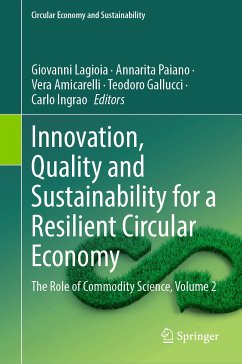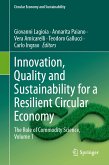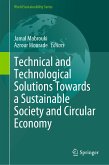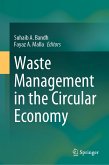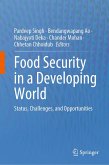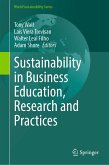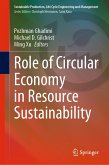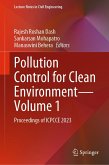Innovation, Quality and Sustainability for a Resilient Circular Economy (eBook, PDF)
The Role of Commodity Science, Volume 2
Redaktion: Lagioia, Giovanni; Ingrao, Carlo; Gallucci, Teodoro; Amicarelli, Vera; Paiano, Annarita


Alle Infos zum eBook verschenken

Innovation, Quality and Sustainability for a Resilient Circular Economy (eBook, PDF)
The Role of Commodity Science, Volume 2
Redaktion: Lagioia, Giovanni; Ingrao, Carlo; Gallucci, Teodoro; Amicarelli, Vera; Paiano, Annarita
- Format: PDF
- Merkliste
- Auf die Merkliste
- Bewerten Bewerten
- Teilen
- Produkt teilen
- Produkterinnerung
- Produkterinnerung

Hier können Sie sich einloggen

Bitte loggen Sie sich zunächst in Ihr Kundenkonto ein oder registrieren Sie sich bei bücher.de, um das eBook-Abo tolino select nutzen zu können.
This book is the second volume of a selection of the best papers presented at the XXX National Conference of Commodity Science held in Bari, Italy on 27-28th October, 2022. It is designed to help advance the knowledge and application of Commodity Science in innovation, quality, and sustainability principles and goals. Furthermore, it provides support in confronting the current environmental and socioeconomic challenges and contributes to addressing and solving those concerns in a circular economy context.
Under this perspective, the book highlights the central role that Commodity Science…mehr
- Geräte: PC
- ohne Kopierschutz
- eBook Hilfe
- Größe: 9.98MB
![Innovation, Quality and Sustainability for a Resilient Circular Economy (eBook, PDF) Innovation, Quality and Sustainability for a Resilient Circular Economy (eBook, PDF)]() Innovation, Quality and Sustainability for a Resilient Circular Economy (eBook, PDF)226,95 €
Innovation, Quality and Sustainability for a Resilient Circular Economy (eBook, PDF)226,95 €![Technical and Technological Solutions Towards a Sustainable Society and Circular Economy (eBook, PDF) Technical and Technological Solutions Towards a Sustainable Society and Circular Economy (eBook, PDF)]() Technical and Technological Solutions Towards a Sustainable Society and Circular Economy (eBook, PDF)161,95 €
Technical and Technological Solutions Towards a Sustainable Society and Circular Economy (eBook, PDF)161,95 €![Waste Management in the Circular Economy (eBook, PDF) Waste Management in the Circular Economy (eBook, PDF)]() Waste Management in the Circular Economy (eBook, PDF)105,95 €
Waste Management in the Circular Economy (eBook, PDF)105,95 €![Food Security in a Developing World (eBook, PDF) Food Security in a Developing World (eBook, PDF)]() Food Security in a Developing World (eBook, PDF)145,95 €
Food Security in a Developing World (eBook, PDF)145,95 €![Sustainability in Business Education, Research and Practices (eBook, PDF) Sustainability in Business Education, Research and Practices (eBook, PDF)]() Sustainability in Business Education, Research and Practices (eBook, PDF)121,95 €
Sustainability in Business Education, Research and Practices (eBook, PDF)121,95 €![Role of Circular Economy in Resource Sustainability (eBook, PDF) Role of Circular Economy in Resource Sustainability (eBook, PDF)]() Role of Circular Economy in Resource Sustainability (eBook, PDF)113,95 €
Role of Circular Economy in Resource Sustainability (eBook, PDF)113,95 €![Pollution Control for Clean Environment-Volume 1 (eBook, PDF) Pollution Control for Clean Environment-Volume 1 (eBook, PDF)]() Pollution Control for Clean Environment-Volume 1 (eBook, PDF)186,95 €
Pollution Control for Clean Environment-Volume 1 (eBook, PDF)186,95 €-
-
-
Under this perspective, the book highlights the central role that Commodity Science can play, also considering the multiple possibilities of interacting with other relevant research sectors, like food production and packaging, engineering, environmental science, organization, management, decision science, and social science, so enabling valorization and maximization. These interactions will appeal to academics, producers, decision- and policymakers, and other stakeholders.
Thus, this book has a multidisciplinary holistically integrated approach to Commodity Science that contributes to enhancing the current literature and knowledge.
Dieser Download kann aus rechtlichen Gründen nur mit Rechnungsadresse in A, B, BG, CY, CZ, D, DK, EW, E, FIN, F, GR, HR, H, IRL, I, LT, L, LR, M, NL, PL, P, R, S, SLO, SK ausgeliefert werden.
- Produktdetails
- Verlag: Springer International Publishing
- Seitenzahl: 391
- Erscheinungstermin: 26. April 2024
- Englisch
- ISBN-13: 9783031552069
- Artikelnr.: 70494669
- Verlag: Springer International Publishing
- Seitenzahl: 391
- Erscheinungstermin: 26. April 2024
- Englisch
- ISBN-13: 9783031552069
- Artikelnr.: 70494669
- Herstellerkennzeichnung Die Herstellerinformationen sind derzeit nicht verfügbar.
